Where Gumbo Was (#313)
If you carry out an internet search for 'Limburg,' the first few hits will probably refer you to places in the Netherlands and Belgium. The Limburg which Gumbo visited uses the suffix 'an der Lahn'—literally 'on the (river) Lahn'—and lies in the German state of Hesse, around 50 km north of the state capital Wiesbaden. Congratulations to George G, who correctly identified the location.
The photo at the top shows the half-timbered houses at Bischofsplatz (Bishop's Square). Limburg is famous for well-preserved buildings of this kind – the German term is 'Fachwerkhaus'.
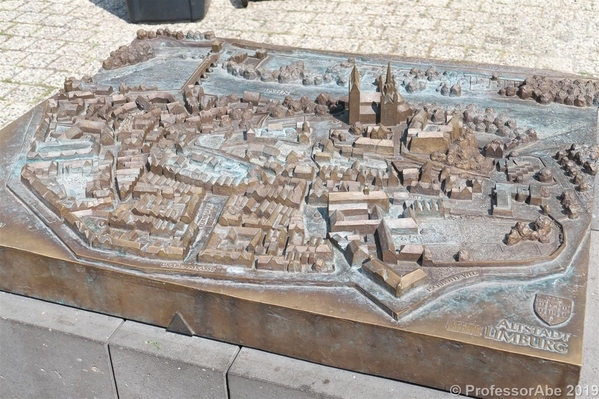
The three-dimensional model depicted above gives you some idea of the layout of the old town. It is dominated by Limburg's cathedral, dedicated to St. George, which is situated on a hill overlooking the town. The following two photos show the cathedral from different perspectives.
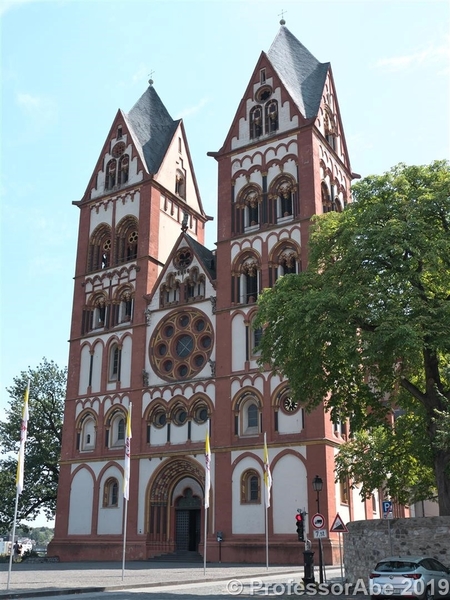
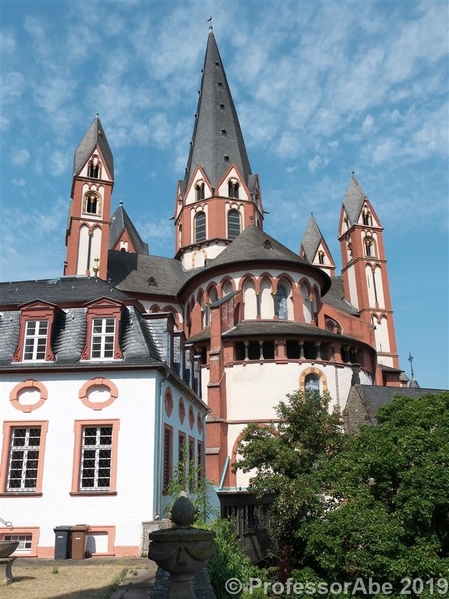
Its cultural importance beyond the confines of Limburg is evidenced by the fact that for nearly 30 years it featured on the back of the German 1000-Mark note. It certainly is an impressive building, not just from the outside.
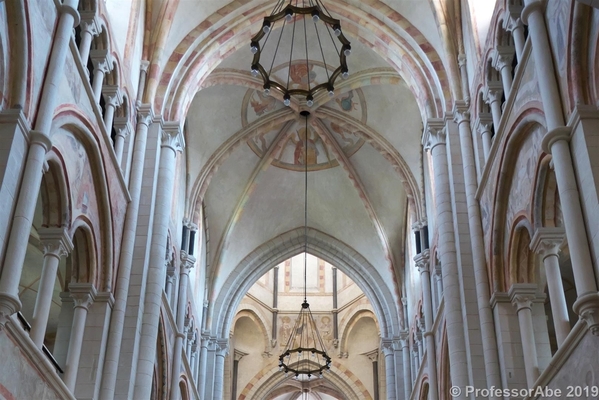
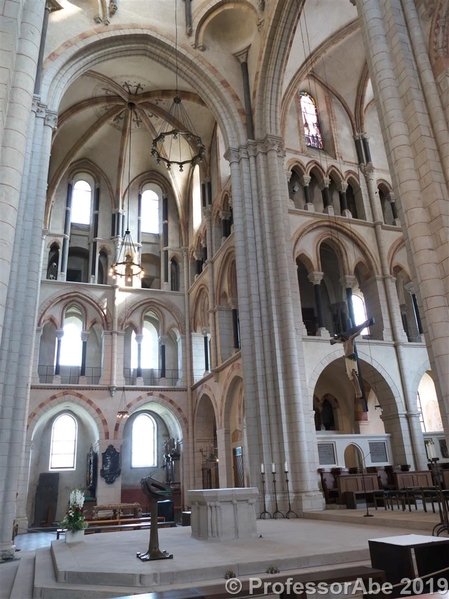
The decorations are not as lavish as those you will find in many other European cathedrals, but there are interesting frescoes all over the building. The one below, in a corner of a side chapel, depicts the martyrdom of St. Erasmus.
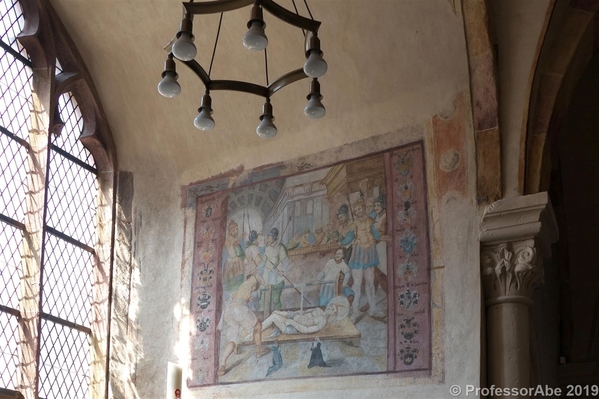
A particularly large wall painting shows the ancestry of Jesus Christ. In front of it is the tomb of Count Konrad Kurzbold, who, in the 10th century, established the collegial body which built a church and subsequently the cathedral here. The moniker Kurzbold translates as 'shorty' – presumably he was not a very tall man. (Some sources suggest that in the German of the time it meant that he was also brave).
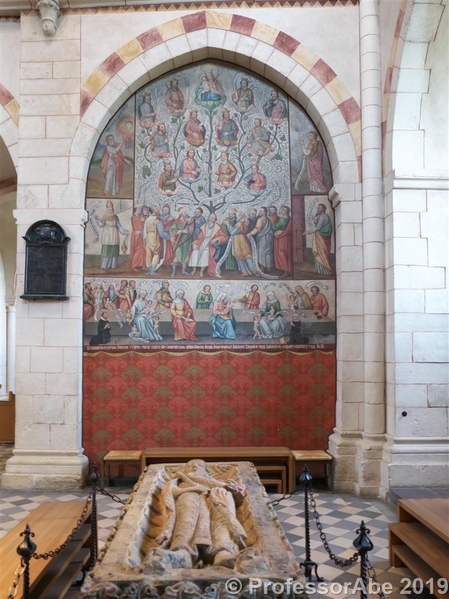
On the same hill as the cathedral, and immediately behind it, are the remains of Limburg's castle. The buildings date from several different periods. The long hall, a section of which is depicted below, is thought to have been constructed in the 14th century and is remarkably well preserved.
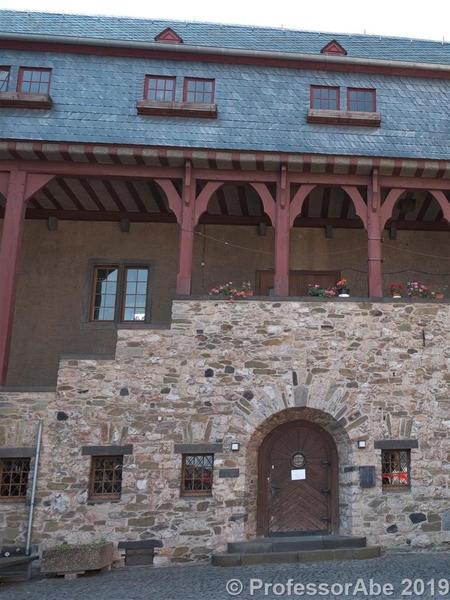
Just down the hill from the Cathedral is another church, the town church of St. Sebastian. Its interior is much more interesting than its plain facade might lead you to expect.
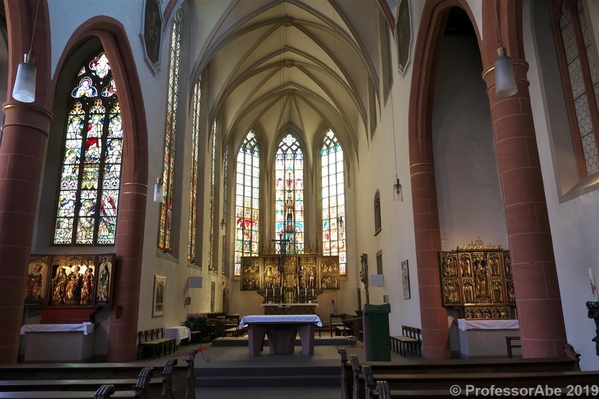
The high altar, in particular, is well worth seeing. It dates from 1891 and apparently was created to celebrate the golden anniversary of the bishop's ordination.
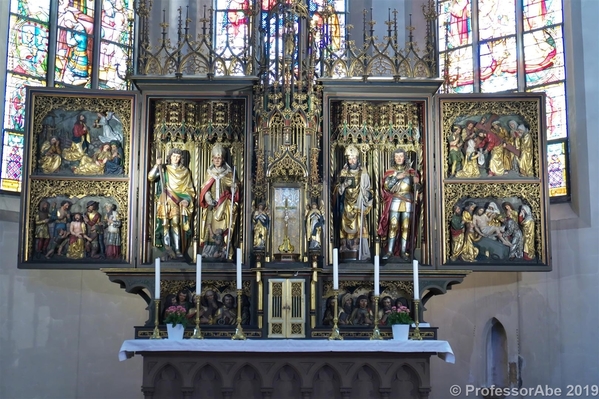
Having been added in 1686, the beautiful organ is over 200 years older than the altar.
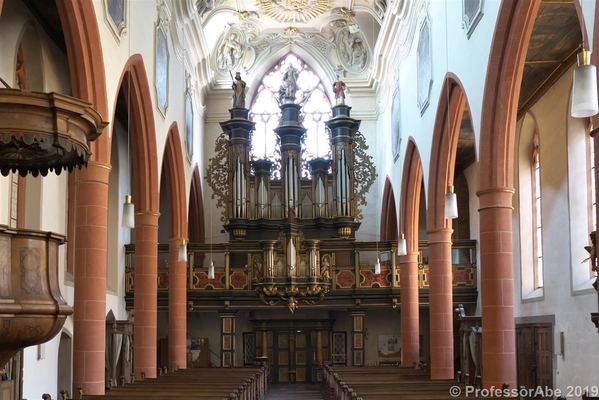
The view from the steps of the church is the one shown at the beginning of this piece. Just to the left is another nice 17th century building: the Trombetta House, the former home of a merchant family of that name. The sign in front of it advertises Baumkuchen (literally 'tree cake'), a layer cake created on a spit – a process that produces a pattern reminiscent of tree rings. (Wikipedia describes it as a 'spit cake', which might be technically correct, but does not sound very appealing.)
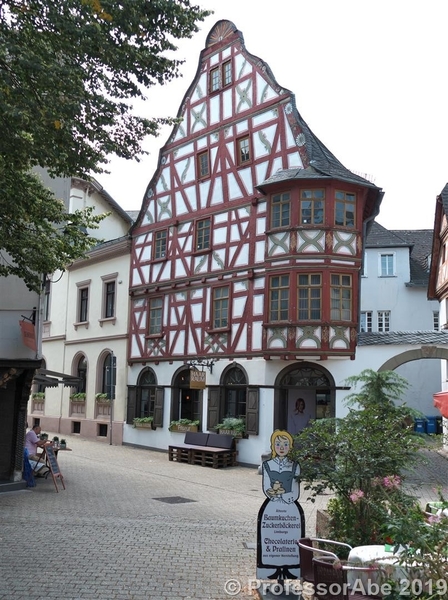
Wandering along the streets of the old town you come across many other Fachwerk buildings.
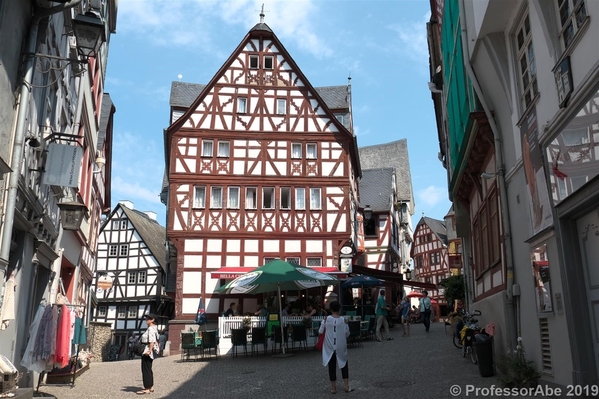
The two photos below show different parts of the Waldendorffer Hof, once a residence of a branch of the powerful Waldendorffer family.
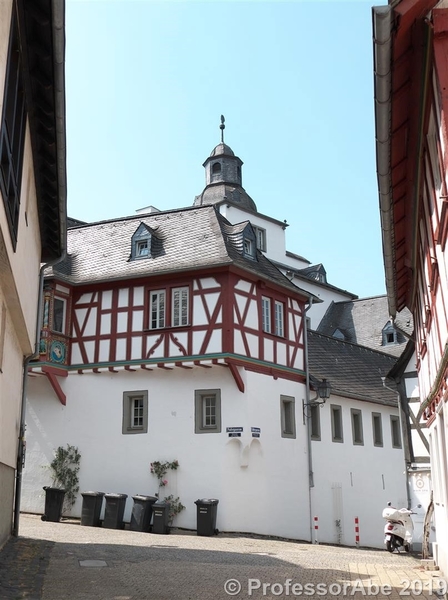
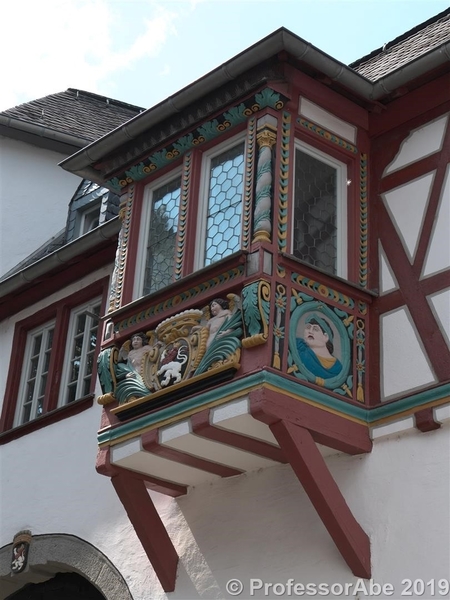
The Kornmarkt (Corn Market) area offers a number of opportunities for a drink and something to eat.
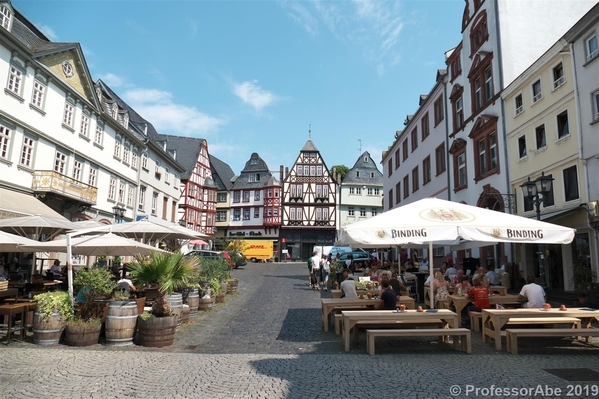
Many of the streets are quite narrow. You certainly do not need to worry about dodging cars here.
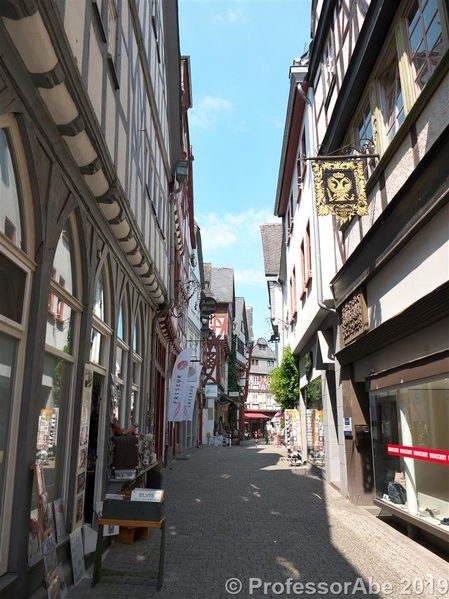
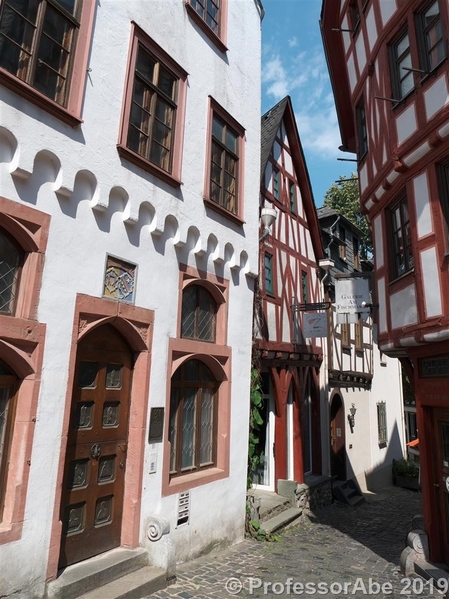
The photo above is of the Fischmarkt (Fish Market) area, where some of the oldest houses in Limburg can be found.
Below are a few further photos of spaces and buildings in the old town.
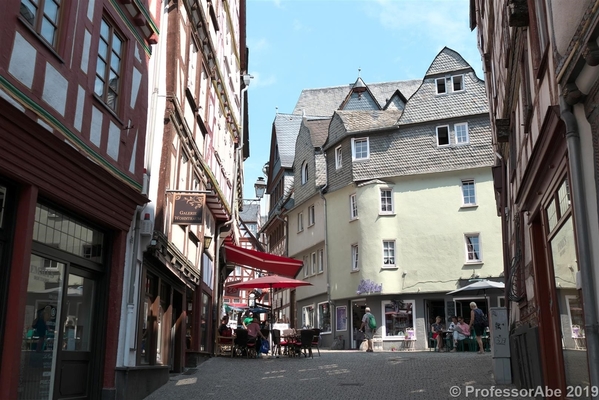
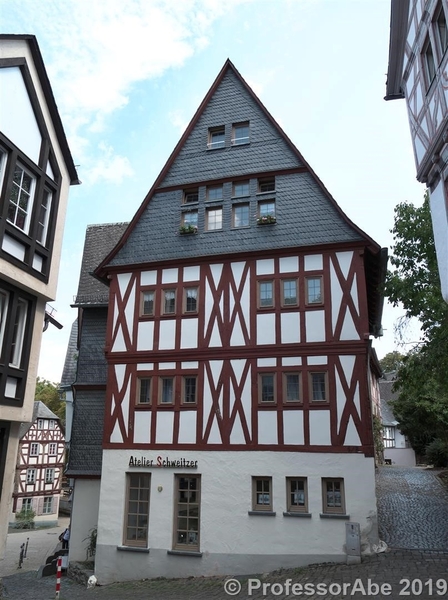
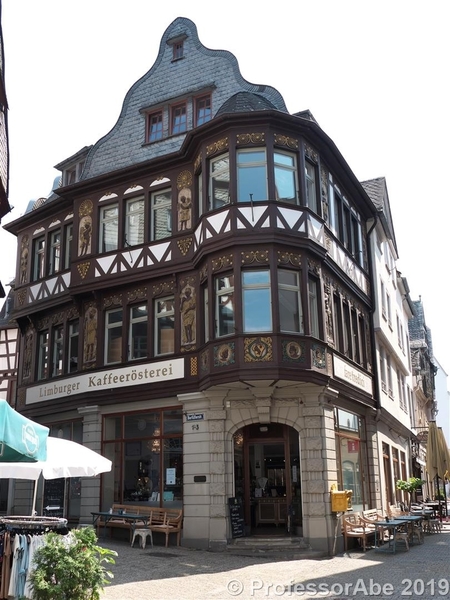
The next shot will be familiar to you if you have studied the clues to the puzzle. It shows the Hattstein Fountain, named after one Friedrich von Hattstein, a former robber baron who in 1353 became Limburg's town captain. Apparently he was a strong guy, capable of lifting a barrel of wine over his head and drinking from it. There have probably been people with less impressive faculties who have held public office! And as to him being a robber ….
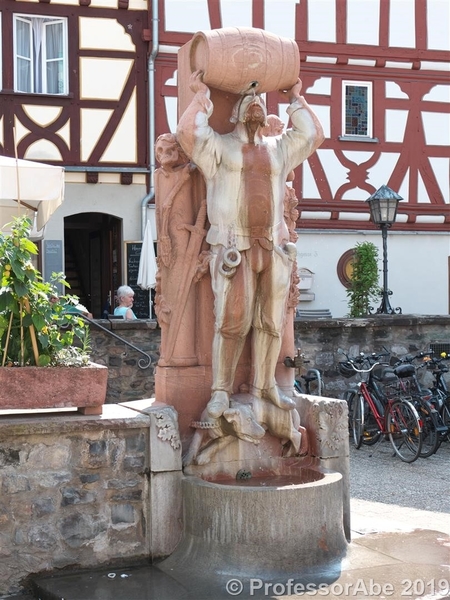
On the edge of the old town is another fountain. Again, the photo will be familiar to you if you have looked at the puzzle clues. The statue shows St. George slaying the dragon (albeit a fairly small one) and the fountain is known as Georgsbrunnen (George's Fountain).
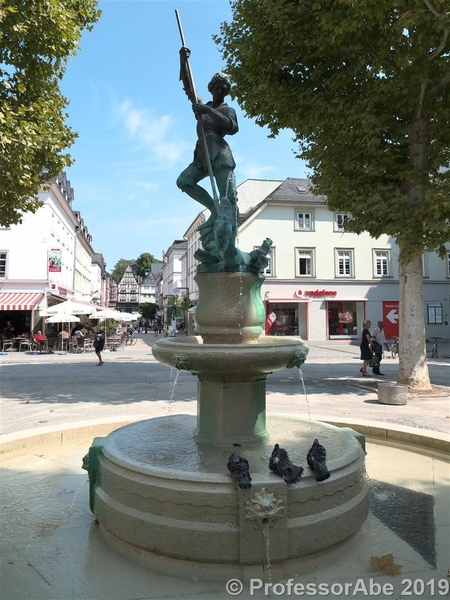
On the town's opposite edge is this bridge over the river Lahn.
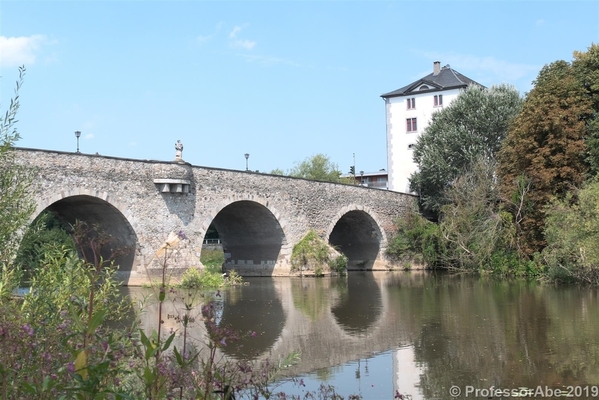
Both the bridge and the gate house at the far end date from the 14th century. A second tower at the other end was demolished in 1818 – to ease the flow of traffic!
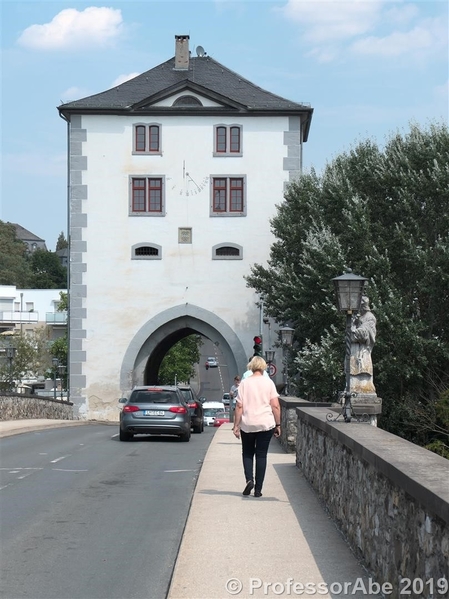
The bridge affords splendid views of the river and the Cathedral.
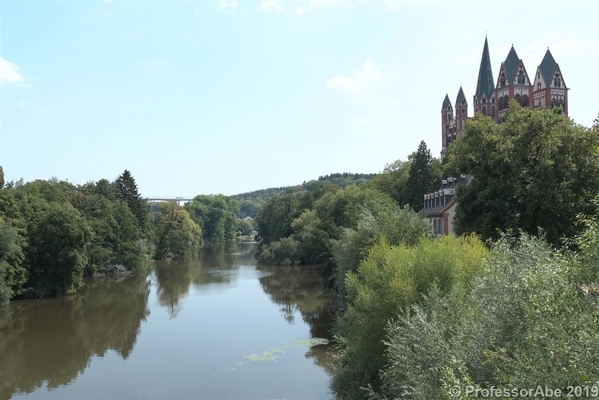
The Lahn, incidentally, is a tributary of the Rhine. It meets the latter at Lahnstein, near Koblenz.

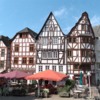


























Comments (2)